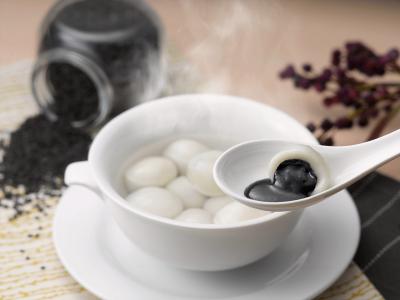Chinese New Year Food: Top 6 Foods to Bring You Good Fortune
Table of Contents
- 1. Chinese Dumplings (饺子, jiǎo zi)
- 2. Fish (鱼, yú)
- 3. Niao Gao (年糕, nián gāo)
- 4. Tangyuan (汤圆, tāng yuán)
- 5. Hot Pot (火锅, huǒ guō)
- 6. Good Fortune Fruit
Chinese New Year, also called Spring Festival or Lunar New Year, is the most important festival in China. It falls on the first day of the first month of the Chinese Lunar Calendar, usually between January 21st and February 20th of the Gregorian calendar. Chinese New Year 2026 falls on Wednesday, February 17th, 2026, marking the start of the Year of the Snake.
During Chinese New Year, people of Chinese heritage around the world celebrate with rich traditions, dazzling festivals, and, oh yes, food! In Chinese culture, Chinese New Year food traditionally carry auspicious meanings to wish the best for family and friends.
So, here’s a list of the most popular Chinese New Year foods on everyone’s table during the Lunar New Year holiday celebrations, especially on Chinese New Year Eve’s family reunion dinner. Traditional lucky Chinese New Year foods include dumplings, fish, Chinese New Year cake, tangyuan, and much more. They are delicious and full of good luck. Make sure you try these Chinese new year dishes and desserts to guarantee luck and prosperity during the New Year.
1. Chinese Dumplings (饺子, jiǎo zi)
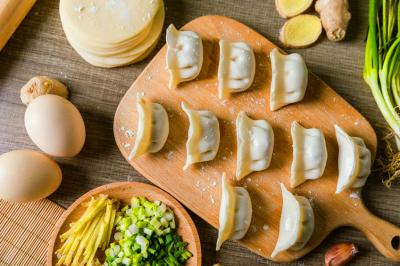
Dumplings, or jiaozi, is one of the most representative foods of China, with a history of more than 1,800 years. And it’s one of the must-have traditional Chinese New Year food on the Chinese New Year dinner menu, especially in northern China.
The shape of Chinese dumplings resembles the ancient Chinese currency sycee (gold or silver ingot). Chinese people eat folded dumplings during the Lunar New Year to wish for good wealth in the year to come.
There are countless types of Chinese dumpling fillings. Traditional dumpling meat fillings include pork, chicken, beef, and shrimp mixed with various chopped vegetables like Chinese cabbage, Chinese leek, celery, mushroom, etc. The cooking methods of Chinese dumplings include boiling, steaming, frying and baking. Here’s how to make Chinese dumplings step by step.
Lucky Dumplings
When you travel to China, food tour or not, the dumpling is certainly a must-try Chinese food. If you are going to visit Xi’an, it’s recommended to feast on a dumpling banquet. We can also arrange for you to learn how to make Chinese dumplings at a local family’s home. Just feel free to contact us.
>> Find out more popular food in China you must have a try
2. Fish (鱼, yú)
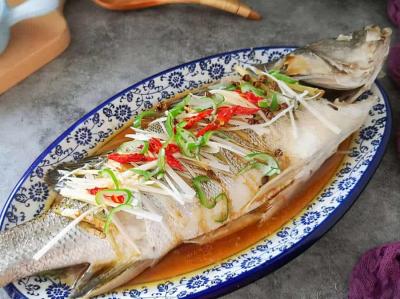
Fish is an essential Chinese New Year food at the family reunion dinner held on Chinese New Year’s Eve. In Chinese culture, the pronunciation for “fish” is the same as “abundance or surplus”. Eating fish on the New Year’ Eve dinner symbolizes having an abundance of food and money in the time that follows.
According to Chinese New Year food traditions, fish is usually served as a whole, with head, bone, and tail. A whole fish signifies family unity. As one of the most important Chinese New Year dishes, fish can be cooked in many ways, such as steaming, boiling, braising, and frying. Steamed fish served with soy sauce is amongst the most popular Chinese New Year fish recipes.
Dos and Don’ts
>> Read more on popular meat dishes for Chinese Lunar New Year in different regions of China.
3. Niao Gao (年糕, nián gāo)
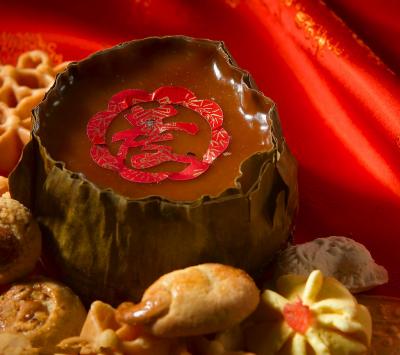
Nian Gao, also known as Year Cake or New Year Cake, is the most famous Chinese New Year dessert and food. It’s another instance of a homonym associated with good fortune. Niangao sounds the same as “year higher” in Chinese. The idea is that by eating niao gao during the Chinese Lunar New Year, you'll hopefully be better and more successful year after year.
Nian gao is a kind of glutinous rice cake with a history of over 1,500 years which can be dated back to the Northern and Southern dynasties of China (386-589 AD). Originally, this delicious sticky rice flour cake used to be an offering to the gods and ancestors. Now, it’s a kind of festive food to bring good luck and great taste to people. Niaogao is also given as a gift to friends and relatives for good fortune.
Nian gao can be either sweet or savory depending on the region of China with various ingredients and flavors. Year cakes are traditionally formed into round shapes to signal completeness and reunion. Most commonly, Nian gao is a steamed rice cake. However, in some regions of China, nian gao is sliced and stir-fried in dishes or boiled in the soup.
>> Check out more interesting facts and stories about Nian Gao
4. Tangyuan (汤圆, tāng yuán)
One of the most important symbols for Chinese New Year is the circle representing wholeness, completeness, and unity. Tangyuan is another top Chinese New Year food with this symbolic significance. Its round shape signifies the idea of togetherness and family reunion.
These sweet rice balls are made of glutinous and traditionally filled with black sesame paste and mashed peanuts. They are boiled and served in sweet ginger soup. This chewy Chinese New Year dessert is usually eaten with family members on the Lantern Festival, marking the end of the Lunar New Year period.
However, in the southern part of China, tangyuan is favored throughout the New Year celebrations. According to Chinese food culture, tangyuan is also a popular dessert to eat at the Chinese Winter Solstice Festival.
5. Hot Pot (火锅, huǒ guō)
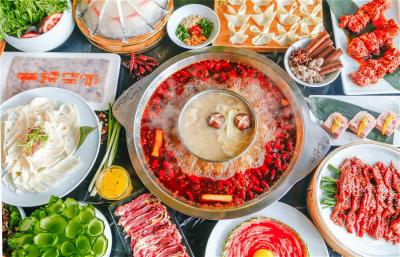
For many, hot pot is a delightful necessary Chinese Lunar New Year food for Spring Festival dinners. As Chinese New Year always falls at the tail end of winter, having a hotpot in the winter months makes everyone feels warm, and the atmosphere cooking with family and friends is lovely. Hotpot feast signals the coming together of family and friends.
Hot pot, or steamboat, is another Chinese New Year food with a long history. The prototype of the hotpot can be traced back to the Zhou Dynasty (1027 to approximately 221 BC). It became popular among emperors during the Qing Dynasty (1644-1911). According to historical records, Emperor Qianlong of the Qing Dynasty was very fond of hot pot.
If you’ve never experienced a hotpot, you might consider it the Chinese fondue. Similarly, everyone at the table cooks their food in one shared pot. Generally, various meats, vegetables, and noodles are cooked in a broth. There are different flavors and ingredients of hot pot from north to south across China, from Beijing mutton hotpot and Sichuan hotpot to Chanshan beef hotpot and Yunnan mushroom hotpot.
You May Also Be Interested In:
6. Good Fortune Fruit
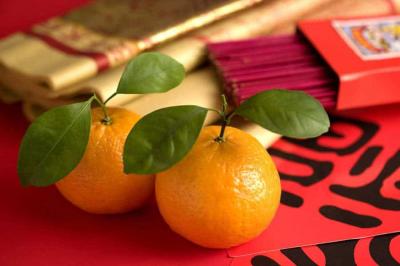
During Lunar New Year festivities, certain fruits are eaten or given as a gift for their auspicious symbolic meanings, including oranges, tangerines, clementines, kumquats, and pomelos. These citrus fruits are selected as traditional good fortune Chinese New Year fruits because their round shape and vibrant golden colors represent fullness and prosperity.
In traditional Chinese culture, it’s very common for Chinese people to use homonyms to express their wish for good fortune. The pronunciation of orange (橙) sounds like the pronunciation of the Chinese character for “success” (成). Moreover, it’s not only that part of the Chinese character for tangerine (桔) and kumquat (金桔) contains the character for “luck” (吉), but also it has the same pronunciation of luck in Cantonese.
Originally a Cantonese tradition, you may also see many people display small trees of tangerines and kumquat as decoration of home during the Chinese New Year, except for eating them.
